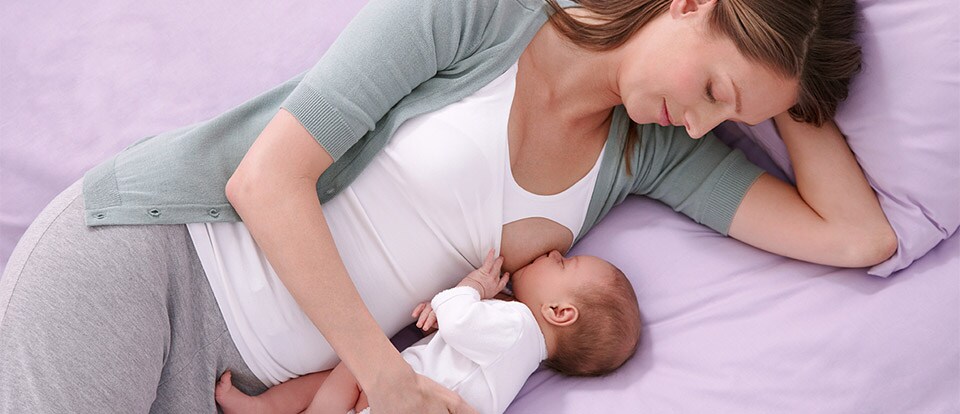
Mums and their babies need to be together to enable the best start to breastfeeding. From the moment of birth – when a baby is placed on mum’s naked chest (known as ‘skin-to-skin’) – the mother’s powerful ‘mothering’ hormone, prolactin, is stimulated.
Not all babies will want to feed as soon as they are born. Don't worry - just watch for the cues that your baby is ready.

Crying and fussing are late hunger cues and babies can be quite grumpy by this point, making attachment to the breast more challenging.
Babies are often alert in the first few hours following birth and keen to have their first breastfeed. They may need encouragement if mum had pain relief, such as pethidine, in labour (this crosses the placenta and may make baby sleepy). The average amount of colostrum taken at the first feed is up to 5mls or the equivalent of a teaspoon.
Healthy term babies might not feed very much in the first 48 hours. They use their energy stores until mum’s milk levels start to increase from the second day. The mother should offer her baby her breast whenever he or she is awake and showing signs of wanting to feed. All babies are different – some may only feed a few times in the first 24 hours while others may feed up to eight times. It’s important for mum and baby to not be separated at this time so she can get to know her baby and recognise his feeding cues.
In the first 48 hours a baby will produce only two to three wet nappies. This increases to at least six per day once the baby is five days old. Colostrum acts as a natural laxative, helping baby to pass the black, tar-like meconium stool (baby’s first poo) which will gradually change in colour – passing through a spectrum of black, dark brown, greenish brown to mustard yellow by day five.
Although breastfeeding is natural, it’s a skill that both mother and baby can take time to learn. If you have any questions or concerns, your midwife and local breastfeeding advisor will be around to help.
Please be aware that the information given in these articles is only intended as general advice and should in no way be taken as a substitute for professional medical advice. If you or your family or your child is suffering from symptoms or conditions which are severe or persistent or you need specific medical advice, please seek professional medical assistance. Philips AVENT cannot be held responsible for any damages that result from the use of the information provided on this website.
VIA
Avent Breast Milk Containers
SCF612/10
Manual breast pump with bottle
SCF330/20